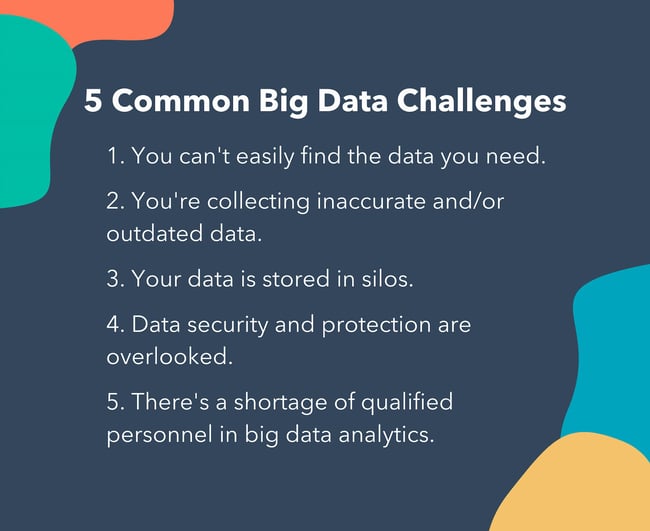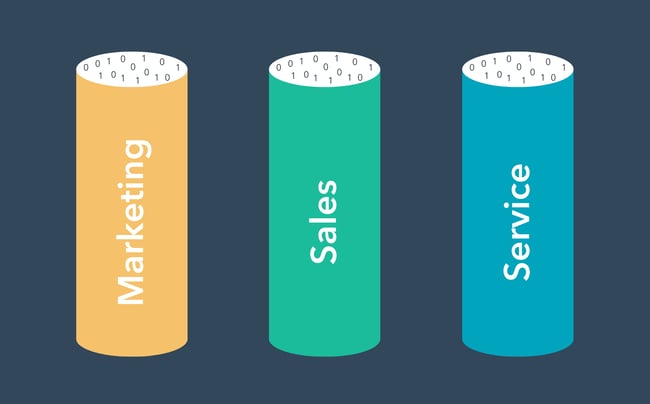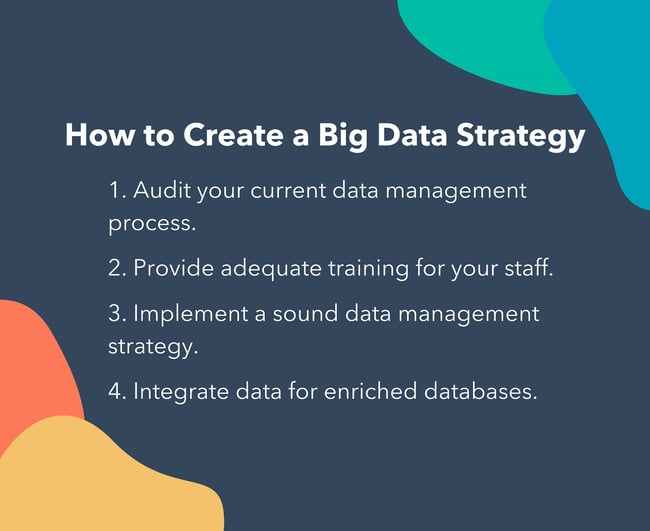What Are Some Challenges Big Data Needs to Overcome
Large data is the next big field of opportunities for businesses. Insight from big data can identify and solve issues within an organization, provide insight into the customer lifecycle, and inform ways to increase sales, among other benefits … but information technology too comes with its share of big data challenges. The corporeality of data generated every mean solar day keeps growing — in fact, data product was 44 times greater in 2020 than it was in 2009. Every bit a result, businesses have more than data than e'er at their disposal to inform their business decisions. But, this vast amount of data brings almost as many challenges every bit information technology does solutions. To exist useful, data needs to be tracked, managed, cleaned, secured, and enriched throughout its journey within your organization to yield the nearly effective results. In this article, we'll comprehend some of the primary big data challenges, and solutions for how your business can overcome them. While the specific challenges you'll face with big data volition depend on your arrangement'due south industry, infrastructure, and the types of information y'all're dealing with, these five cadre problems tend to show up repeatedly when managing data. Let's break downward each ane in detail. The first challenge of big data analytics that a lot of businesses see is that big data is, well, big. In that location seems to be information for everything — customers' interests, website visitors, conversion rates, churn rates, financial information, and then much more. While a lot of that information is extremely useful, there are huge chunks that aren't exactly relevant for your business organization. And, with the sheer amount of information available, it tin can be hard to determine what is valuable for your business and what isn't. This trouble typically presents itself if information is coming into your business organization unfiltered and unstructured through various dissimilar channels. If you take too much data in your databases, it's likely that somewhere along the line you lot've inadvertently nerveless inaccurate data, or that some of your data is no longer valid. This trouble starts at the drove procedure of your information lifecycle and is especially prevalent if your business is collecting information from a multitude of different sources and formats. If data drove isn't standardized across all channels, you can run into real problems when y'all need to analyze the data and extract insights from it. This information is also collected from different apps that don't always "talk" to each other, looked at by several teams that don't have access to the full motion picture, and analyzed without any safeguards to ensure information quality, validity, and security. In essence, poor data collection leads to low standards of quality and accuracy. And if you tin't trust your data, you tin can't trust the assay y'all become from it. Data silos are another big problem that can occur when dealing with big data. If all of your information is stored in separate databases that don't communicate with each other, you've got information silos on your hands. What this means is that your teams aren't all looking at the aforementioned data, but instead only have access to a limited snippet that doesn't tell the whole story. If your teams can just come across a portion of the data, information technology can atomic number 82 to poor execution — it could be the reason why your marketing and sales teams are misaligned, or why your customer service department misinterprets a client's needs. Without a 360-degree view of your data, it's hard to figure out how to build accurate, trustworthy reports and extract the best value. More than information means more than opportunity for security breaches. This problem is exacerbated when that data is less organized. As your business concern grows and you add new tools to your software stack, and deploy new technologies to brand sense of your data, there is a heightened probability for lapses in security. Consider the post-obit potential threats to your information security: It'southward common for businesses to have problems finding qualified people to organize, manage, and analyze big data. The applied science and tools effectually large information are advancing rapidly, but there aren't necessarily enough people who can operate this applied science at an good level. It'due south much harder to collect, manage, and build actionable reports from large data if your squad simply doesn't take the know-how. We've tackled the potential challenges of big data analytics that your business can encounter, and you lot might have noticed a pattern in all of them: They stalk from a lack of structured processes to collect, manage, and analyze data. By creating a sound information strategy that clearly outlines who handles the data, where it comes from and where it goes, and how it moves within your systems, y'all'll be in the best position to derive actionable insights and create positive organizational change. Let's review some large data all-time practices to follow. To get-go, it'southward a skillful idea to audit your current data management processes. Wait at all the apps in your software stack that collect data, such as your CRM, email marketing app, and pb generation tool. Some of these processes and tools might have been implemented when your company was at a totally unlike stage, which means that they might non be a good fit for where you are now. A skilful big data strategy starts at the collection or creation stage. Brand sure that all the data inbound your systems is accurate and valid (due east.g. make sure your forms merely have valid electronic mail addresses and telephone numbers with the right amount of digits). In add-on, triple-check that no data is being entered by bots (you lot can use security applied science, like reCAPTCHA, for this purpose) and that users are providing full consent for you to store and handle their information. Compliance with data protection and privacy laws is crucial. If you can't have a person or team that specializes in managing data for you lot, make sure your existing teams that handle it on a daily basis know what to exercise. This can involve providing courses in data direction and analytics, running data direction bootcamps, and training them extensively in the tools you're using. If information technology'south not feasible to rent new people to handle data — or if you tin't find the talent — information technology'due south important to keep your whole team up to speed to reduce the occurrence of human error. That said, data analytics doesn't have to exist super circuitous.At that place are many tools, like Chartio and Tableau, that make it easy for anyone to easily access, analyze, and make decisions based on information. After auditing your current processes, yous will hopefully have a much amend idea of what works for your organisation and what doesn't when information technology comes to data direction. Take note of what areas demand to be improved and which are doing well. With this in listen, information technology's time to outline a new data direction strategy. Your large data solution needs to fit your business now, but also in the futurity. Otherwise you'll run into problems over again as you lot scale. Cleaning up your databases is the first step in this strategy. You lot might need to browse your databases and erase all outdated, duplicate, and invalid information. So, build the all-time tech stack to store and manage data, introduce company-wide standards for information entry and maintenance, dorsum up your information, and cull integration platforms to make sure your databases are connected and playing nicely together. One of the nigh of import things you can practise to make sure you get the most out of big information is integrating your databases. Without integration, no affair how skillful your data plan is, you volition always end up with information silos and misaligned departments. As well, the all-time software stack in the globe will never be 100% effective if it'due south non integrated. In fact, the most successful businesses run with tools that are integrated in real time, enabling everyone to have an accurate, updated and 360-degree view of every aspect of the organization. There are a few options to integrate your databases: When there are no native integrations, many businesses choose an iPaaS tool to integrate their software stack is the near comprehensive and cost-effective solution. Examples of these tools include Zapier, Tray.io, and Automate.io, which specialize in trigger-activity and one-way information pushes between apps. An integration tool automates huge parts of the data direction process, reduces the need for manual data entry, unifies data formats, and reduces the chances of man error. It tin also be a large assistance in ensuring security and compliance with data protection laws. A crucial function of your big information strategy is deciding where and to whom the data is accessible. Data integration is the near reliable fashion to achieve this and ensure that the data is flowing correctly between all your applications. Editor'due south note: This mail was originally published in September 2020 and has been updated for comprehensiveness. five Mutual Big Information Challenges

1. Yous can't easily find the data you need.
2. You lot're collecting inaccurate and/or outdated data.
3. Your data is stored in silos.


4. Information security and protection are overlooked.
5. There'due south a shortage of qualified personnel in big information analytics.
How to Create an Effective Large Information Strategy

1. Audit your current data management process.
2. Provide adequate training for your staff.
3. Implement a sound data management strategy.
4. Integrate data for enriched databases.


Originally published Feb 17, 2022 vii:00:00 AM, updated Feb 17 2022
darnell-smithwithurch1995.blogspot.com
Source: https://blog.hubspot.com/website/big-data-challenges